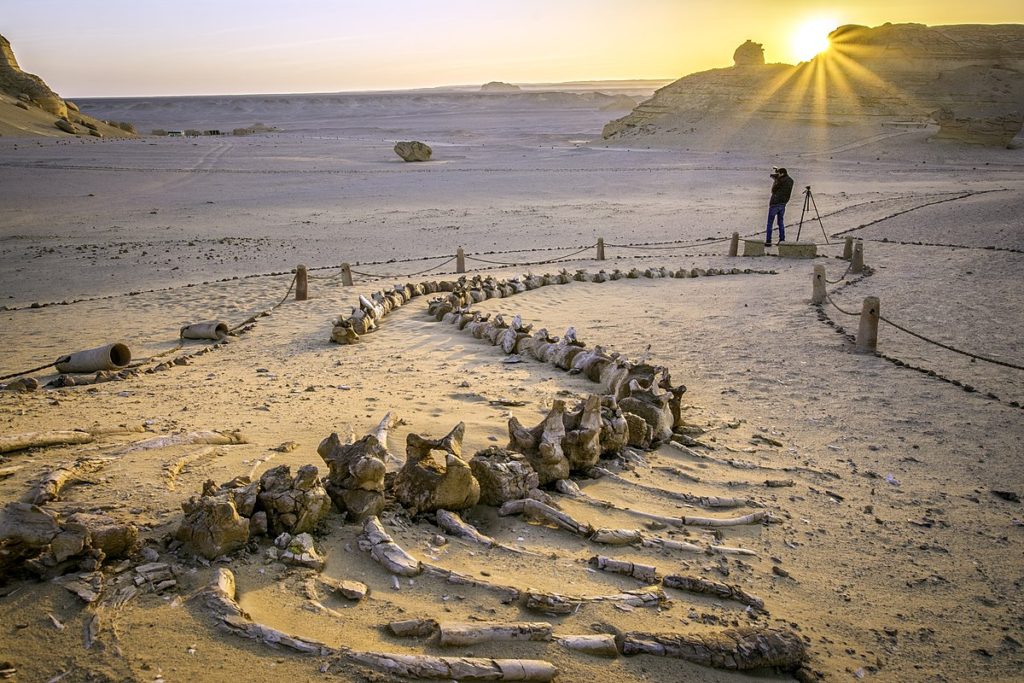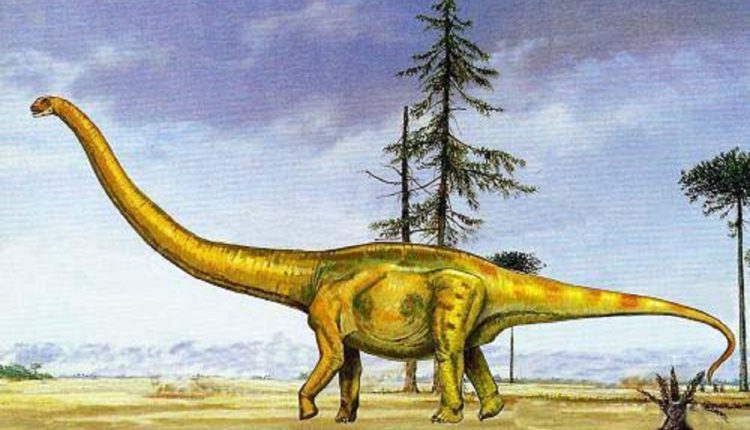With two great deserts on either side of the Nile, all Egyptians learn from an early age that their country is mostly a barren landscape, except, of course, for the fertile Nile Valley where most of the population is crammed.
Yet, to the surprise of many, around 6,000 years ago Egypt once had a warmer, wetter climate that gave rise to lush, green landscapes. At the time, animals such as elephants, wildebeests, giraffes, cheetahs, and lions used to roam the Nile valley.
If you go even further back in time, a huge portion of the Egyptian west, around Fayoum, was submerged underwater by a tropical, shallow sea where the ancestors of modern whales lived; their remains have survived to this day as a preserved testament of the evolutionary history of ocean-dwelling mammals.
Yet, the most fascinating find dates back millions of years ago, when dinosaurs of colossal magnitudes used to walk the landscape we now call home. So without further delay, here are our picks for some of the most interesting prehistoric animals that used to roam Egypt.
Mansorasaurus
Discovered in 2018 by a team of Egyptian scientists from Mansoura University, Mansorasaurus is a sauropod found nowhere else in the world. The juvenile skeleton was found to be 10-meters tall, and it weighed around 5,000 kilograms. The remains of this true Egyptian dinosaur were found near El-Dakhla Oasis in the Western Desert.
Sauropods are dinosaurs with long necks, long tails, small heads, and four pillar-like legs; they were some of the largest animals that ever lived on land.
Deltadromeus

Deltadromeuses are carnivorous dinosaurs belonging to the theropod group, which included dinosaurs like Tyrannosaurus Rex and the Spinosaurus, two apex predators of the time.
The Deltadromeus was a fast-running dinosaur that was found throughout the North African coast, from Egypt to Morocco, 95 million years ago. This predator, which could grow to a length of 12.2 meters, hunted down smaller animals that shared its habitat.
Spinosaurus
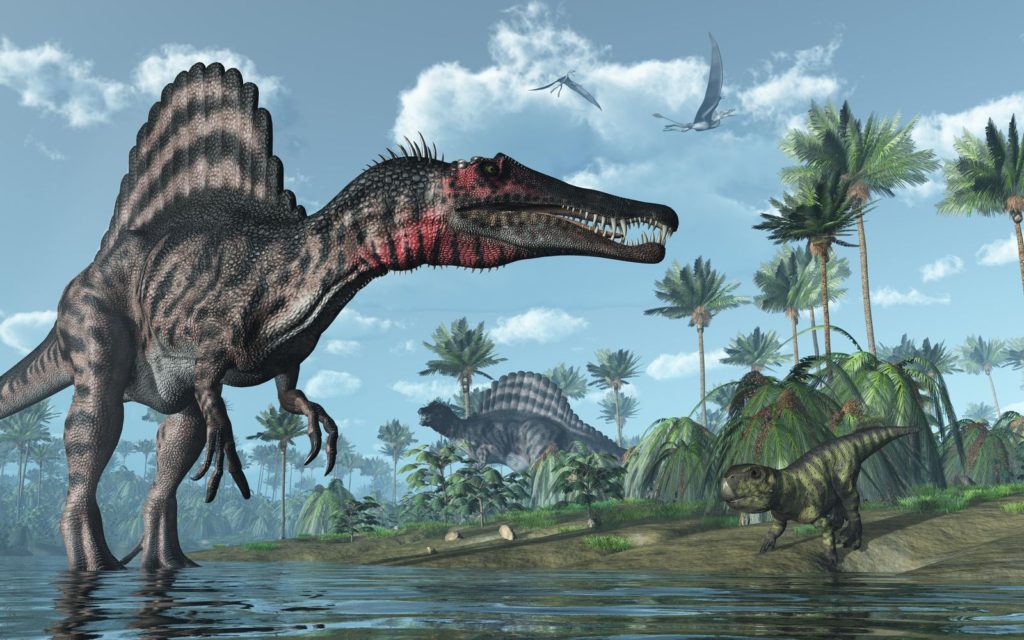
With a length of 15-16 meters, some speculate that the Spinosaurus was the largest among all known carnivorous dinosaurs. It too belongs to the theropod group, and used to live in North Africa 112 million years ago.
The first evidence of this dinosaur came from Egypt in 1912, but the skeleton was destroyed in World War II. Yet other fossils found in Morocco revealed that this dinosaur was similar to a crocodile in its way of life. It lived near bodies of water, living both on land and in water, hunting fish and other terrestrial prey.
Basilosaurus
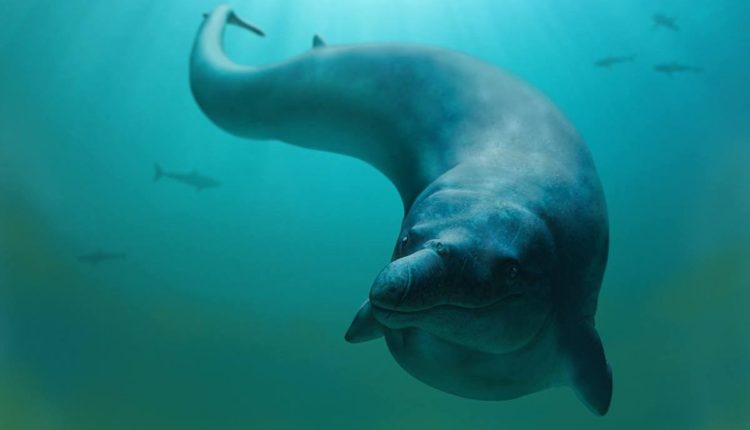
The question of how some mammals abandoned life on land for the seas has always been difficult to answer. Until 1902, the evolutionary history of whales and other ocean-dwelling mammals remained an enigma, yet when a team of foreign geologists stumbled across a desolate valley in the Western Desert, now called Wadi Al-Hitan, this most nagging puzzle was about to be solved.
Wadi Al-Hitan was home to some of the most well-preserved skeletons to ancestors of whales, including the Basilosaurus. These animals had tiny, vestigial hindlimbs, proving that ocean-dwelling mammals once had hind limbs.
Although the fossils in Egypt belonged to animals that were so adapted to marine life they could not leave the water, other older specimens from India revealed that whales’ ancestors used to have fully-functioning hindlimbs and used to spend their time between land and water, similar to a modern-day hippopotamus.
Hippopotamus
Speaking of Hippopotamuses; around 6,000 years ago, before the construction of any pyramids, the River Nile was teeming with a species of hippo called the Egyptian Hippopotamus. Back then, the climate was not as arid; in fact, it was similar to the wetter climate of eastern Sub-Saharan Africa.
Ancient Egyptian paintings depict pharaohs hunting hippos, which shows how highly prized the animal was in ancient Egypt. Unfortunately, overhunting and the spread of agriculture drove wild hippo populations in Egypt to extinction.
Egyptian Cheetah

Over the long history of Dynastic Egypt, our ancient ancestors used to worship felines, associating them with the Goddess Bastet; one interesting fact about this deity is that before the domestication of the cat, she used to have a ferocious nature, but as the ancient Egyptians domesticated cats, the goddess’ temper waned, and she became more composed over the years.
In ancient Egypt, it was not uncommon for people to have cats as pets in their households, but well-off families, such as the royals and other high society factions, used to keep cheetahs around as pets.
Cheetahs were used in hunting because of their unmatched speed, but because finding and training one was not easy, evidence suggests that this practice was more for enjoyment than practicality.
Barbary Lion

Similar to cats and cheetahs, lions were revered all over ancient Egypt because of their association with the God Maahes and the Goddesses Bastet and Sekhmet. The Barbary lion, or the North African lion, is an Asiatic lion group that used to live across North Africa from the Red Sea coast all the way to that of the Atlantic Ocean.
Owing to the widespread use of firearms in the 20th Century, an increasing number of bounties were put on lions and humans eventually drove them to extinction.
Striped Hyena
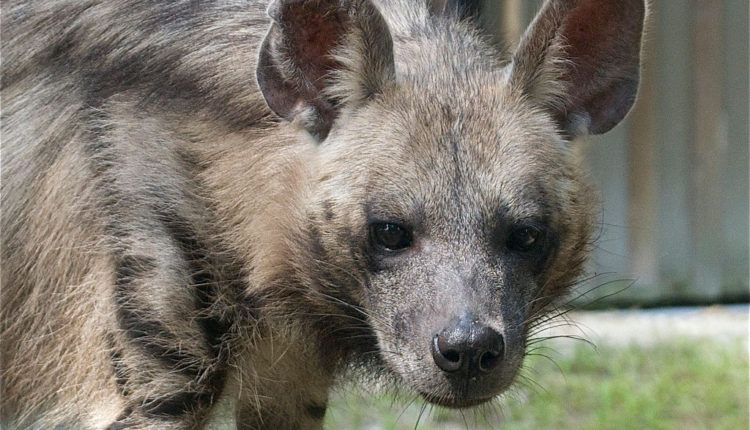
Although studies have yet to confirm it, many experts suspect that the striped hyena population in Egypt has gone extinct. These animals roamed the Nile Valley and Delta for millennia, but since they were considered a danger to livestock, growing numbers of Egyptian farmers’ hunted them and did so for generations.
Today, an estimate of 10,000 hyenas are scattered across sub-Saharan Africa, the Middle East, India, and southwest Asia. They are omnivorous scavenger mammals that feed on carcasses, fruit, eggs, and insects.
North African Elephant

A subspecies of the African bush elephant, the North African elephant spread across the Mediterranean coast of North Africa and down to the Red Sea coasts of Sudan and Eritrea. These animals were used by the Egyptian Ptolemaic Dynasty as war elephants.
During the reign of the Roman Empire, the North African elephant was pushed to extinction.


